#South East Asian Folklore
Explore tagged Tumblr posts
Text
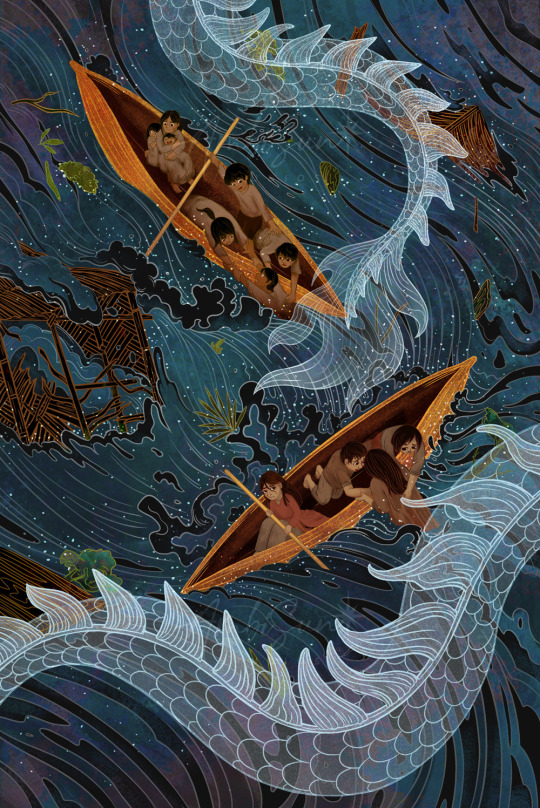
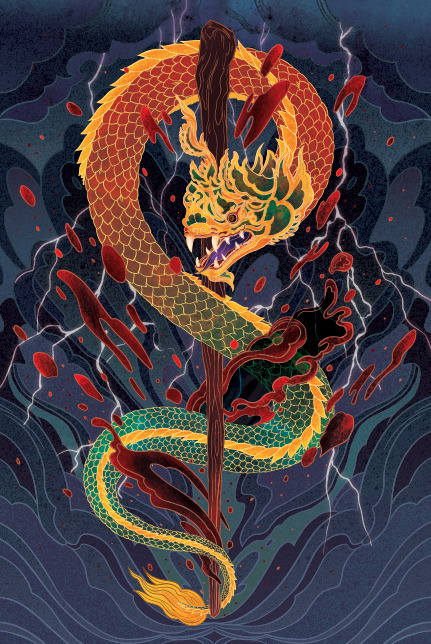
South East Asia and our Dragons that solves their problems by flooding villages when they’re disrespected.
#naga#dragon#south east asia#folklore#tales and oracle of eleven#mythology#south east asian folklore
284 notes
·
View notes
Text
I've been listening to a horror folklore podcast recently and what I've mainly learned is that South East Asian folk does not fuck around
I love folklore so much because depending on the location and era it comes from it's either the most terrifying concept or the dumbest thing you've ever heard
86K notes
·
View notes
Note
Which myths would you be particulary excited about working into the superfox verse
Greek myths are always a classic. I’ve already mentioned things like centaurs, harpies, sirens, and dryads. But tbh them in a modern setting has already been thoroughly explored by stories like Percy Jackson so they’re not the most exciting to explore.
I think what I’m most anticipating is Celtic folklore. It’s always been one of my favorite mythos. I kind of want to include Kelpies somehow because I love those murder horses but I’m not sure how. I just love how many of their creatures are just slightly inhuman like with the fae, leprechauns, werewolves, bodach, the dullahan, vampires, and a bunch of unique ghosts like the banshee. It would be fun to find ways to integrate them into modern society.
I think I just have a weakness for myths about tricksters
#also vampires aren’t exclusively Celtic or Romanian or anything so if I do include them in anything I’ll have to do a ton of research#because different cultures from the Americas to Asia have different myths about bloodsuckers#also with the dullahan I just think it would be so fun to modernize the headless horseman#bc horses are kind of outdated for transport#so what if he’s like. a headless taxi driver instead#that would be so fun#ask lemon#random fox becomes a superhero (not clickbait)#also Japanese folklore has been one of the most exciting ones for me if you can’t tell#but ehhh that doesn’t count for the question since I’ve been including a lot of Japanese folklore already#also also I want to include more central/south American mythos but I don’t know it as well as European or East Asian#also also also! I’m curious if there is a culture/mythos people would want to see? I can do research and take suggestions to-#-hopefully do less explored cultures justice#I think I typed more in the tags than the actual post sobs
4 notes
·
View notes
Text

Bat Week 2020: A Celebration of Bats in Asia-Pacific Cultures Art by Reimena Yee.
(Bigger image from here for more readable text. The background colouring is a little too bright though)
Text on the map under the cut.
You may have heard the soft flutter of bat wings at dusk, noticed them flitting around at night, or even seen them sleeping under roof eaves, in trees and caves during the day. But apart from these brief encounters, have you ever wondered how bats may have traditionally held deeper symbolic meaning in various cultures?
This visual map guide celebrates the many positive bat symbols and folklore found across the Asia-Pacific region. Our ancestors recognised the importance and wonder of bats!
Look out for our full write-up and get updates by following rimba.ngo!
Project Pteropus, a project under RIMBA.
India
In India, Hindu devotees of the goddess Kali worship and protect flying foxes which roost in sacred groves. Bats also feature as symbols of love in Tamil Sangam poetry, dating back more than 2000 years!
China / Taiwan / Chinese culture
A tale from ancient China: The gods took pity on Zhong Kui when he committed suicide. They named him King of Ghosts and tasked him to discipline demons, with bats acting as his helpers who scout out demons for him to vanquish.
In Chinese opera, the Zhong Kui character wears a bat motif on his mask.
The Five Blessings (五福 wŭfú) in Chinese culture are health, wealth, longevity, love of virtue and peaceful death. They are represented symbolically by five bats (五蝠 wŭfú).
In traditional Chinese culture, bats are lucky symbols because the word for bat (蝠 fú) sounds like the word for blessing (福 fú).
Lucky bat motifs can be found on traditional ceramics, jewellery and textiles in Chinese, Peranakan and other Chinese-influenced communities across East and Southeast Asia.
Vietnam
Locals believe that flying foxes roosting in the Wat Mahatup temple grounds in Vietnam are calling forth blessings from Buddha when they circle the temple during their fly-out every evening.
Malaysia / Indonesia
The indigenous Mah Meri in Peninsular Malaysia perform a traditional dance called 'kuang kuwait', mimicking the graceful movements of flying foxes.
The 'siku keluang' a choreography step in the traditional Malay Zapin dance represents humility and restraint - inspired by the flying fox wrapping up its mighty wings' strength when not in flight.
The 'siku keluang', meaning flying fox elbow in the Malay language, is a zigzag, chevron or herringbone motif used in Malay and Javanese traditional textiles and pottery.
According to a traditional Iban belief from Sarawak, Malaysian Borneo, bats act as shamanic messengers to the upper-world during the Gawai harvest festival.
The indigenous Iban in Sarawak traditionally featured the flying fox, locally known as 'semawa', as a tattoo motif.
Papua New Guinea / Western New Guinea
In Bowi folklore of Papua New Guinea, Kinjinmbunduo was a mythical giant flying fox female spirit who left thunderstorms and strong winds in her wake, striking terror and awe but also replenishing the river basin with fruit trees by dispersing seeds during her nocturnal visits.
In New Guinea and Papua New Guinea, the indigenous Asmat and Trobriand carved out flying fox motifs on their war shields to represent triumphant head-hunters.
Samoa
Flying foxes are perceived as protectors and saviours in Samoan folklore. According to legend, Samoan Princess Leutogi befriended and warned flying foxes about the king's hunting plans. In return, the bats rescued her from being burned alive and also brought her food when she was stranded on an inhospitable island. She later bestowed the name "Tonumaipe'a" on her son, meaning "rescued by flying foxes".
For Samoan men, the pe'a—the local name for flying fox is a coming-of-age tattoo that extends From the waist to the knee, symbolising protection over a warrior.
The Samoan war god Sepo took the form of a flying fox to guide his people in battle. If they saw a flying fox ahead, it meant victory would be theirs; if it flew back towards them it was a warning to retreat.
Australia
Flying foxes were important animals to the Aboriginal people of Cape York, Australia, and a common feature in their prehistoric rock art.
Folklore of the Aboriginal Wik in Australia tells of two brothers who broke taboo by spearing and cooking flying foxes. The bats escaped and carried the boys up into the sky as punishment, leaving them there to serve as a grim reminder now immortalised in the Gemini constellation!
Link to open access article of the research:
#bat#bats#asia pacific#south east asia#asia#folklore#culture#cultures of the world#asian culture#chinese culture#tradition#indigenous#indigenous culture#bat week#chiroptera#mammal#animal#bats of asia#india#china#taiwan#vietnam#malaysia#indonesia#papua new guinea#new guinea#samoa#australia#partially described#bat info
3 notes
·
View notes
Text

Oracle deck based on South East Asia mythology coming up on Kickstarter!!
#tarot#divination#oracle deck#south east asia#folklore#mythology#south east asian mythology#witchcraft#witchblr#tarot deck#oracle cards#cartomancy#kickstarter#asian mythology#asian folklore
0 notes
Note
We're at the last week of our campaign and just need a little more to reach the end!! Please help us if you can.
Read about our stories here.
Hi Neil, I've been a long-time fan of your work.
Art Matters really helped me in my career as an Illustrator especially when I was going through self-doubt and burnout. The book was part of the reason that I ended up working with a friend and created an anthology and oracle deck that highlights the Mythology and Folklore of South East Asia.
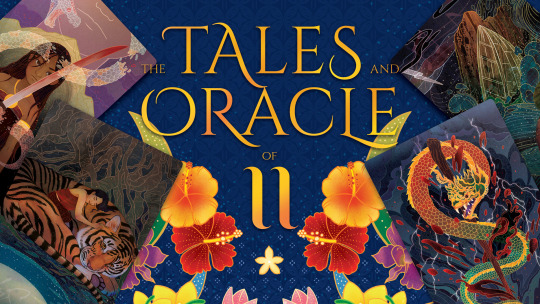
Our folklores tend to be passed down orally and are slowly being forgotten through time as much of them are wiped away with war and colonization. SEA folklores are also not as popular compared to Greek and Egyptian mythologies even though we have equally fascinating lore. With this project, we hope to share a part of our culture with the world and ensure that they are not lost or forgotten over time.
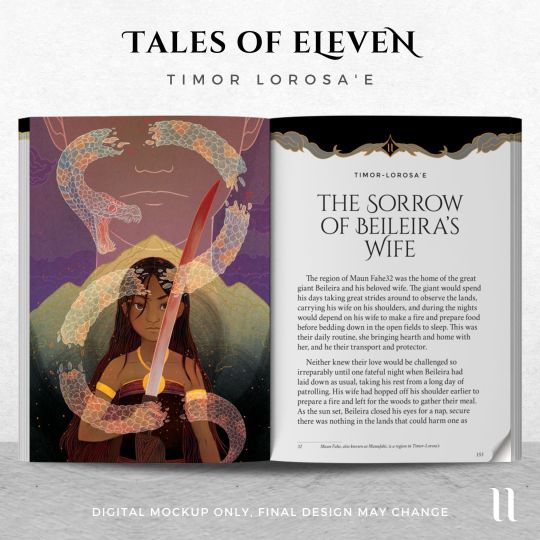
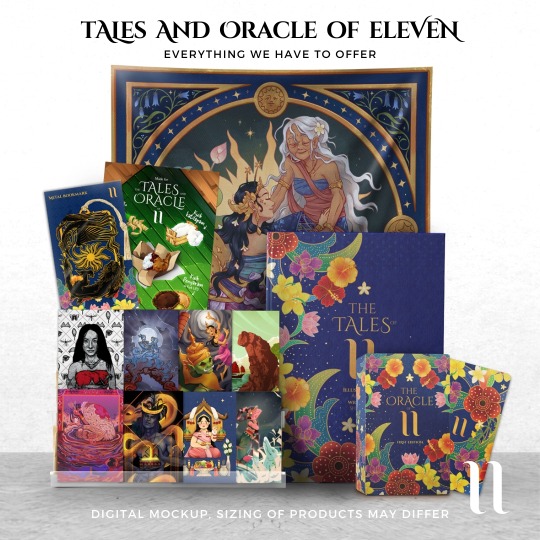
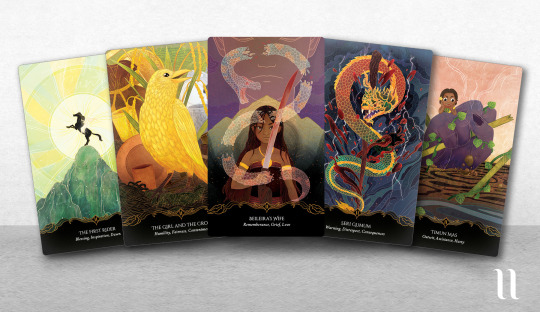
Our project is currently going through a Kickstarter campaign and I thought I'll try my luck to get a shoutout for our project as we've been having a hard time getting the word out there.
Even if you can't do so for any reason, that's perfectly ok! ( I'm literally just here shamelessly shooting my shot) Thank you for your books, I'm excited to read more from you in the future.
That looks very cool.
#indie oracle deck#illustration#folklore#mythology#south east asian mythology#south east asian folklore#boost
750 notes
·
View notes
Photo
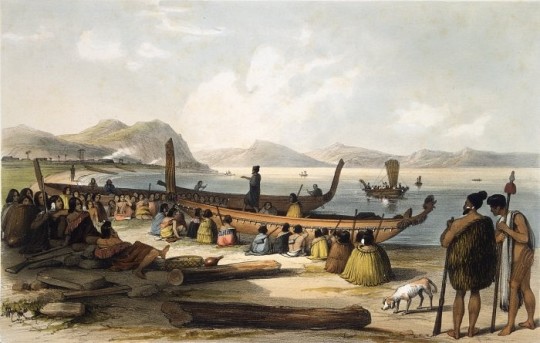
Polynesian Navigation & Settlement of the Pacific
Polynesian navigation of the Pacific Ocean and its settlement began thousands of years ago. The inhabitants of the Pacific islands had been voyaging across vast expanses of ocean water sailing in double canoes or outriggers using nothing more than their knowledge of the stars and observations of sea and wind patterns to guide them.
The Pacific Ocean is one-third of the earth's surface and its remote islands were the last to be reached by humans. These islands are scattered across an ocean that covers 165.25 million square kilometres (63.8 million square miles). The ancestors of the Polynesians, the Lapita people, set out from Taiwan and settled Remote Oceania between 1100-900 BCE, although there is evidence of Lapita settlements in the Bismarck Archipelago as early as 2000 BCE. The Lapita and their ancestors were skilled seafarers who memorised navigational instructions and passed their knowledge down through folklore, cultural heroes, and simple oral stories.
The Polynesian's highly developed navigation system impressed the first European explorers of the Pacific and since then scholars have been debating several questions:
was the migration and settlement of the Pacific islands and into Remote Oceania accidental or intentional?
what were the specific maritime and navigational skills of these ancient seafarers?
why has a large body of indigenous navigational knowledge been lost and what can be done to preserve what remains?
what type of sailing vessels and sails were used to cross an open ocean?
Ancient Voyaging & Settlement of the Pacific
By at least 10,000 years ago, humans had migrated to most of the habitable lands that could be reached on foot. What remained was the last frontier – the myriad islands of the Pacific Ocean that required boat technology and navigational methods be developed that were capable of long-range ocean voyaging. Near Oceania, which consists of mainland New Guinea and its surrounding islands, the Bismarck Archipelago, the Admiralty Islands, and the Solomon Islands was settled in an out-of-Africa migration c. 50,000 years ago during the Pleistocene period. These first settlers of the Pacific are the ancestors of Melanesians and Australian Aboriginals. The small distances between the islands in Near Oceania meant that people could island-hop using rudimentary ocean-going craft.
The so-called second wave of migration into Remote Oceania has been an intensely debated scholarly topic. Remote Oceania is the islands to the east of the Solomon Islands group such as Vanuatu, Fiji, Tonga, Aotearoa (New Zealand), Society Islands, Easter Island, and the Marquesas. What is debated is the origins of the first people who settled in this region between 1500-1300 BCE, although there is general agreement that the ancestral homeland was Taiwan. A dissenting view has been that of Norwegian adventurer Thor Heyerdahl (1914-2002 CE) who set out in 1947 CE on a balsa raft called Kon-Tiki that he hoped would prove a South American origin for Pacific islanders. Archaeological and DNA evidence, however, points strongly to a southeast Asian origin and seafarers who spoke a related group of languages known as Austronesian who reached Fiji in 1300 BCE and Samoa c. 1100 BCE. All modern Polynesian languages belong to the Austronesian language family.
Collectively, these people are called the Lapita and were the ancestors of the Polynesians, including Maori, although archaeologists use the term Lapita Cultural Complex because the Lapita were not a homogenous group. They were, however, skilled seafarers who introduced outriggers and double canoes, which made longer voyages across the Pacific possible, and their distinctive pottery – Lapita ware – appeared in the Bismarck Archipelago as early as 2000 BCE. Lapita pottery included bowls and dishes with complex geometric patterns impressed into clay by small toothed stamps.
Between c. 1100-900 BCE, there was a rapid expansion of Lapita culture in a south-east direction across the Pacific, and this raises the question of intentional migration.
Continue reading...
54 notes
·
View notes
Text
Magical girls inspired by the folklore of Indigenous, African, South/South East Asian, Mexican, Brazilian and Aborigine cultures.
50 notes
·
View notes
Note
Can we have a little info on all the ones you haven't drawn yet, even the Maybe Canon? ones? There's a few there I don't recognize at all, and I'm curious.
Sure thing!
Not Drawn Yet:
The angont – a serpentine dragon from North East USA and Eastern Canada
The Australian rainbow serpent – exactly as the name implies. Rainbow serpent from Australia.
Chicken headed serpents – I didn’t know about this until I read @a-book-of-creatures excellent article on Crowing Crested Cobras. I need to actually research these myself, I read the article, thought “these are cool, I will add them to Dracones Mundi”, and then didn’t read/write/draw further (yet!!!!!).
The grootslang or ‘Great Snake’ is from South African folklore.
The kongomato, a winged dragon from the Congo.
The kurrea, a crocodile serpent from Australia
The makara, a creature like a crocodile mixed with an elephant from south Asian folklore: for Dracones Mundi I am making it a relative of the phaya naga.
The markupo is a large red-crested serpent from the Phillippines.
The ropen is a glowing, flying dragon from New Guinea – I might make it a relative of the glowtail in Dracones Mundi lore
Taniwha are water spirits from New Zealand – in Dracones Mundi I am making them a species of sea serpent
Wanizame or wani are sea dragons from Japanese folklore.
Vaguely planned dragons:
The Antarctic Jaculus – dragon I 100% made up, because I was bragging about how Dracones Mundi has ‘dragons all over the map’ and a little snide voice in my head said “what, even Antarctica?” and as Antarctica is not inhabited by people for most of the year it was difficult to find folkloric serpents, so I made up another sea-bird inspired dragon. Both cliffwyrms and Antarctic Jaculus have diving behaviours, which is why their inland cousin, the jaculus, evolved it's divebombing hunting strategy.
Butterfly winged serpent; very small winged serpent with butterfly wing patterns, 100% fictional with no mythology behind it (I mean. There is Pyrausta. But I think Pyrausta would be a different sort of animal, an actual insect, in the Dracones Mundi world, so butterfly winged serpents are not pyrausta)
Oceanic Turtle Dragon; I have the Asian turtle dragon, the European turtle dragon and the Congo Plated Dragon. Running around looking for folklore on ‘turtle dragons’ you end up stumbling into some fantastic artwork for Dungeons and Dragons involving their take on turtle dragons and something about a sea-turtle inspired dragon is really fun and cool. I will see if I can do something unique and different with this concept. If not, I will not be including the oceanic turtle dragon.
Pterosaur dragon; I made dinodrakes as dragons inspired by retro palaeoart of dinosaurs, and I thought “hmm. What if I did the same for retro pterosaurs?” – it turns out there’s a lot of cryptozoology in Africa I could research into for placing these pterosaur dragons somewhere on the map.
Snapdragons; snapdragon flowers need to be named after dragons, so I have a fun idea for a small cave dwelling dragon with petal-like frills and barbels that it uses to sense it’s environment. They also can emit an eerie blue warning glow from their mouths, not dissimilar to the glow of brandy on fire in the Victorian game ‘snap dragon’.
29 notes
·
View notes
Text

Another shared myth across many cultures you might not know about? The swan maiden.
Shows up in Irish folklore, in Wales, Germany, Romania, Russia, Swede, Finish, through other parts of Asia, the middle east, and one of the oldest south Asian tales there is - so old that- people believe the theme might have come to that story from an earlier proto Indo-European tale.
What does the swan maiden represent? Well, it changes, but it's often thought to be: divinity, a representation of both the sky and water, a bridge between them, and celestial presence - entities. Luck. Prosperity.
#The swan maiden#folklore#wales#germany#romania#russia#sweden#ireland#asia#Swan Maiden#swan queen#middle east#folktales#myths#legends#lore#ancient history#ancient mythology#mythology#storytelling#storyteller#writers and writing#writing#writers on tumblr#writeblr#writers and poets#writerscommunity#creative writing#indie writer#writers
36 notes
·
View notes
Text
Adirondack Arcane University Course Catalogue Pt. 1
Writing, History, & Literature
Ancient History (ANCH)
ANCH 0100 The Ancient World: Mesopotamia and Phoenicia
ANCH 0200 The Ancient World: Egypt
ANCH 0300 The Ancient World: Greece and Rome
ANCH 0400 The Ancient World: China
ANCH 0500 The Ancient World: Mesoamerica
Magical History (MAGH)
MAGH 0100 Magic in the Middle Ages: Europe
MAGH 0101 Magic in the Middle Ages: Africa
MAGH 0102 Magic in the Middle Ages: Asia
MAGH 0110 Magic in Pre-Colonial North America
MAGH 0111 Magic in Pre-Colonial South America
MAGH 0200 Magic during the Renaissance: Europe
MAGH 0201 Magic during the Renaissance: Asia
MAGH 0202 Magic during the Renaissance: North America
MAGH 0203 Magic during the Renaissance: South America
MAGH 0300 Magic during the Industrial Revolution: Europe
MAGH 0301 Magic during the Industrial Revolution: North America
MAGH 0400 History of Modern Magic: Europe
MAGH 0401 History of Modern Magic: Africa
MAGH 0402 History of Modern Magic: West Asia
MAGH 0403 History of Modern Magic: South Asia
MAGH 0404 History of Modern Magic: East Asia
MAGH 0405 History of Modern Magic: North America
MAGH 0406 History of Modern Magic: Central America
MAGH 0407 History of Modern Magic: South America
MAGH 0408 History of Modern Magic: Oceania
Magical Literature (MALT)
MALT 0100 Cross-Cultural Literature
MALT 0200 Oral Histories
MALT 0300 Major Figures in The Tales of Beedle The Bard and Other Major Works
MALT 0400 Extinct Language Literature
Folklore, Mythology, and Religion (FOMR)
FOMR 0100 Introduction to Folklore
FOMR 0200 Magic and Religion
FOMR 0300 Myths and Religions of the Ancient World
FOMR 0301 Greek and Roman Mythology
FOMR 0302 Hindu Mythology
FOMR 0310 Asian Religions
FOMR 0311 Religions of the West
FOMR 0312 The Religion of Ancient Egypt
FOMR 0400 Jewish Mysticism
Anthropology (ANTH)
ANTH 0100 Magical Language, Society, and the Wizard Experience
ANTH 0200 Magical Food and Culture
ANTH 0300 Magical Archaeology
Communications (COMM)
COMM 0100 News Reporting and Writing
COMM 0200 Critical Perspectives in Journalism
COMM 0300 Philosophical Problems of Journalism
COMM 0400 Journalism and Public Service
COMM 0500 Comparative Journalism
COMM 0600 Long Distance Communication
Arcanarunology (ARUN)
ARUN 0100 Introduction to Arcanarunology
ARUN 0200 Rune Theory
ARUN 0300 Practical Applications of Arcanarunology
ARUN 0400 Semiology
ARUN 0500 Structural Arcanarunology
ARUN 0600 Runic Syntax
#magical education#magic in potterverse#wizarding america#ilvermorny#wizarding world#harry potter#american wizarding#if anyone has suggestions for more classes or changes lmk#anything that doesn't have magic in the name... it's implied; it's a MAGIC school
13 notes
·
View notes
Text
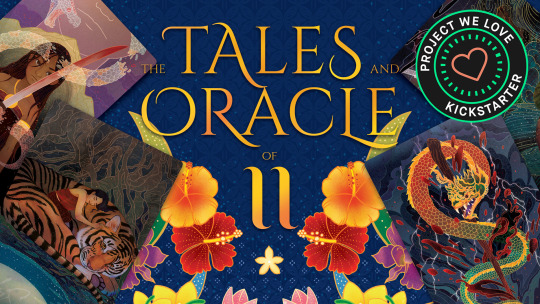
I've been working on this project with Sha for almost a year now and it seems unbelievable that we're about to launch so soon!!
I realized that I tend not to share a lot about my inner workings, as I'm so used to communicating via art, but there's so much I want to talk about in regard to the conception and process of TO11.
When I was a child, I had always been into mythology, fairytales and folklore from all places, especially Greek and Norse mythology as those were always popularized and easily accessible. Growing up in SEA, I was always told tales from Malaysia and the countries surrounding us, but as I grew older, I started to wonder why South East Asian folklore wasn't as popular as Greek or Norse myths even though we also had stories that were equally as interesting and captivating.
This led me down a rabbit hole of learning about the history of S.E.A and how due to war and colonization, so much of our cultural history has started to disappear since most of our stories are passed down orally. This motivated me to start working on the development of Tales and Oracle of Eleven with my friend Sha Roose, who I asked to be a writer for the anthology.

Collecting stories from different countries was quite a challenging task, especially since many of these stories were passed down through oral tradition and have been scarred by the painful effects of colonization. In some countries, we see local stories, once woven into the fabric of their communities, systematically erased and slowly forgotten. Despite facing resource limitations, Sha approached the research and writing with great care, making sure to select stories that were not widely known and focused on ones featuring diverse protagonists, intriguing outcomes, and meaningful analogies.
I'm so happy to be able to invite 11 artists from these 11 countries as well to participate in this project. Besides making art for us, the artists also graciously allowed us to interview them and to get their lived experience of being SEA be it if they are still living there or living overseas as Diasporas. I've learnt so much from them, like did you know Timor Lorosa'e ( commonly known as Timor-Leste ) just gained their independence in 2002?

Anyways, this project has taken about 2+ years to make, and even now I'm still working on the art. ( 64% completed ) Sha and I have truly poured our hearts into this project and If you're still here, thank you for reading this all the way, I really appreciate it.

We're about 11 days away from the launch on Kickstarter, and if you can, please follow us there and share the project! Also, a quick reminder that we will be doing extremely limited quantities of early bird bundles so hit the notify me button on Kickstarter to be the first to know when we launch on the 11th of July, 11:11am EST!
Follow us here
#indie oracle deck#ownvoices#south east asian mythology#folklore#mythology#anthology#south east asian folklore#kickstarter project#not me tearing up writing about this project because i love it so much#i just want to tell our stories like they're so cool and interesting!!#south east asian stories#reblogs appreaciated
182 notes
·
View notes
Text
Wrong definitions of Orientalism I’ve seen online:
Simply using elements from East, South, Southeast, and/or West Asian cultures and folklore as inspiration for fantasy. (This can be problematic, but it's not inherently so.)
A generally racist portrayal of Asian characters. (The portrayal of Mr. Yunioshi in Breakfast at Tiffany's is pretty damn racist, but ain't particularly Orientalist.)
Mixing different elements from different Asian cultures together for a fantasy counterpart culture. (As with #1, it can be problematic, but mixing together elements of different cultures is rather common in fantasy works. Furthermore, while Asians are not a monolith, different Asian cultures have, in fact, influenced each other and they are not hermetically sealed.)
A White person liking anime, K-Pop, or any other Asian media.
A White person being attracted to an Asian person. (Do note: this is not the same thing as, say, "I want an East Asian wife because they're more feminine and submissive.")
Depicting Asian characters as having magical powers in a work that’s very clearly supposed to be a work of fantasy. (If this was enough to classify a work as Orientalist, then One Thousand and One Nights and the entire genre of wuxia would both qualify. Both are also generally vague about when and where they’re supposed to be set.)
Having a “stereotypical” villain. (Specifically, stereotypical how? A villain who twirls their mustache and kicks puppies isn't automatically Orientalist.)
The weird thing about these misconceptions is that the Wikipedia page on Orientalism actually does a decent and succinct job of explaining what Edward Said meant when he used the term:
In Said's analysis, the West essentializes these societies as static and undeveloped—thereby fabricating a view of Oriental culture that can be studied, depicted, and reproduced in the service of imperial power. Implicit in this fabrication, writes Said, is the idea that Western society is developed, rational, flexible, and superior.
This also tends to involve depicting “the Orient” as effeminate, misogynist, decadent, and inherently inclined to tyrannical rule and also conceiving of most, if not all, Easterners as a monstrous horde.
My default go-to when trying to show these attitudes in practice is depiction of the Persians in the comic and its film adaptation, 300. It uses ALL of the Orientalist stereotypes without the slightest bit of irony or nuance.
8 notes
·
View notes
Text
A sequence of events
Jacksfilms tries to guess movies by their Letterboxd reviews Youtube video
References Zootopia shrew Godfather scene
Remember that Judy met the shrew in a neighborhood marked "little rodentia" despite shrews not being rodents
Search what order shrews are actually in
It's Eulipotyphla. What else is in it? Moles, hedgehogs, solenodons (already knew solenodons). Moonrats?
One genus of moonrats is Hylomys, that's from Greek for tree top mouse, which is neat. What are some of the specific names?
Macarong from Vietnamase for vampire. Now I need to know about Vietnamese vampires.
The English Wikipedia page for vampire has Ma cà rồng listed as its Vietnamese counterpart
Etymology of Ma cà rồng deeply unclear; ma is demon, but cà rồng is confidently listed as different things in different Wiki sources: Vietnamese Wikipedia connects it to Indonesian for mountain, English Wiktionary connects it to a Tai Dam word not translated directly but showing its cognates all mean cage or prison, and Vietnamese Wiktionary connects it to Khasi for rib. None of those things connect and I've learned of two ethnicities.
Afflict Google Translate upon the Vietnamese page on vampires, dreading any possible inaccuracies
A quote from some book says: vampires act like humans during the day, being a servant and doing normal things, but at night they stick their two big toes into their nostrils and fly off to be a demon and drink women's blood as they give birth. Then they come home, put their feet in a bucket of water, take their feet out of their nose, and turn human again. The human doesn't remember what they were doing that night
What was that about the toes?
That's the phrase Google Translate spat out, "two big toes into their nostrils", which is to me both insane and visceral. This cannot be right
By a repetitive process of deleting parts of the sentence and seeing how it affects the meaning, identify the role of each word and run through Wiktionary to verify translation; it checks the fuck out.
Xo hai ngón chân cái vào lô mui would be "insert two finger leg big in hole nose" if xo had a little sideways semi circle on the o, lô had a tilde on the ô, and mui has a tilde on the u. My phone's keyboard has limitations
Fuck it keep reading. Boring stuff about European vampires that I already knew, oh goody more Vietnamese specifics! This guy says vampires have red foreheads and a lot of white in their eyes!
Wrestle Google Translate and Wiktionary in order to attempt to decipger what "a lot of white in their eyes" means. The literal translation appears to be eye much core white. The word for core can also be heart? What is it doing there? Dead end
Says it goes to its grandmother's house? More wrestling. Mistranslation of "midwife", back to women giving birth
South East Asian folklore is deeply concerned with pregnancy. I've learned this. I've learned this in my research
Says their nostrils are extra big to fit the toes. Also says they grab their ears in their hands when they fly off?
Wrestling ole Goog Transl and Wicker Shenary again. Tay xách tai - hand pull ear. Xách tai is actually an example sentence for xách, in the meaning of pull up (derogatory)! So yeah
It is roughly 1:30 AM.
Start writing this post
It is 1:52 AM.
None of this has anything to do with mountains prisons or ribs btw. Or shrews or Jacksfilms for that matter
I woke up at 8 today
I'm so hungry
#original broth#any vietnamese people looking to be some sort of salvation are more than welcome btw#vampire#i wasnt meant to be a member of society. i was meant to be studied in a lab.
9 notes
·
View notes
Note
[Huey Zoomer Anon]
I saw someone pointed out the whole complaints about white saviors in media….and the media they use is social Darwinist to your standards American slop
Just because American media is popular, doesn’t mean everyone use it as their sole basics for literature
Including other Americans like me
Yet still
>the left complain about white saviorism
>Proceed to try to force 20th century to modern first world feminism into everything
>Want more diversity
>Try to force LA or NYC style diversity into everything
>Want to tell more non white cultures
>Primarily use Americans or gentrified non whites who shown to have a lot of contempt to their ancestral roots but hate white people more
>Can’t comprehend the SURVIVAL reasons for many gender roles and think one ounce of conservatism is bad
Sorry everyone, I viewing a twitter account how a writer named Reggie Hudlin, who worked at BET and got bash in boondocks….and banned the episode that made fun of BET and him on air for a couple of years. Basic nuked the African Atlantis idea of Wakanda and turn into a black hyperborea
This sums it up https://x.com/thardus2150/status/1878223154117574719?s=46
Seriously can anyone explain how the crimson fuck so many black Americans develop this mindset
“I know this mindset allowed the Europeans, Muslims, Japanese, Chinese, etc. to justify irreversible damage to other humans in human history. But it A-Okay for black people to be it!”
There is no Jerusalem or Canaan in African for African Americans or another orher African Diaspora!
Ugh we had an African American (rip sir) that went to outer space in the 1980’s. You know about 120 years after slavery was banned? Not to mention even 40 years prior to the black astronauts. It was agree upon idea that people of color (side note I hate that term) couldn’t fly until the Tuskegee raiders broke that myth.
Hmm, not to shit on the 80’s-00’s…but anyone else think that Hollywood is… mainly stuck on how you could portray diversity?
Like…can I see a non biblical version of Judea where given it being in the crossroads of many places. It would be natural for ancient people to visit or use it as a stop in their journey
This I constantly praise assassin creed even decade old games because they show the different mindset among black groups they in the colonial era slaves. Some slaves wanted to end slavery and make a more equal world. Others like the Haitian Maroons was consume by vengeance and wanted to slaughter all Europeans. Which lead to….modern Haiti…
Another thing, people are point out all these African folklore and civilizations Hollywood can use. But are Hollywood content creators INTERESTED in Africa a proper continent with multiple cultures and countries to by inspired by
Or are they stuck in the old Social Darwinist view of it?
I think we need to keep that in mind, like the rest of the world had mostly moved on from those ideas of different countries and cultures
But have Hollywood? Do they see African cultures as proper ones?
I was thinking about American Society of Magical Negeroes. I pointed out, though funny enough stuff like Disney American Dragon did long before me. That Black Americans magical user just like whites would mainly use the regional or local common practices. IE Druid or Lovecraft worshippers in the East. Voodoo practices in the south, etc.
I just think…the left is doing 50’s style of how to portray different cultures with a Marxist hat. Do I make sense?
Not gonna paste the whole bit before this, but I will touch on it since it all can be hit with one observation.
>Can’t comprehend the SURVIVAL reasons for many gender roles and think one ounce of conservatism is bad
Yesterday or the day before I saw a post on here that was talking about the lack of Asians and Asian representation in media, got a person popping in with a list of cool current year asian celebrities.
With the added comment in the post somewhere about how they're not Asian, they're Asian American which is different and people need to recognize that.

Seriously can anyone explain how the crimson fuck so many black Americans develop this mindset
Wish I knew
There is no Jerusalem or Canaan in African for African Americans or another orher African Diaspora!
Ya we've hit on that before, might be one of the reasons the hoteps are so big on Egypt despite all evidence to the contrary.
Africa is a big place too, would be a whole lot of different ones if they could be identified.
Ugh we had an African American (rip sir) that went to outer space in the 1980’s. You know about 120 years after slavery was banned? Not to mention even 40 years prior to the black astronauts. It was agree upon idea that people of color (side note I hate that term) couldn’t fly until the Tuskegee raiders broke that myth.
NASA has had a bunch, in as much as society and the government would allow they've always gone with the person who can do the job being who they picked to do the job, there was recruitment issues though sadly.
The nonsense people say today about having to work 5 times harder than a straight white male to get ahead was less nonsensical back in the late 70's, but thankfully NASA heard there was someone asking why there were no women or minorities in the program and they invited her to come and see if she could help do something about that.
youtube
I really hope everyone involved in that universe has some grasp on how important they are still, maybe not the jj abrams part but most of the rest.
I love NASA because NASA heard her and said let's fix this, please come help us fix that problem.
(Sorry this is where i nerd out, stopping myself from writing 20 pages here)
Like…can I see a non biblical version of Judea where given it being in the crossroads of many places. It would be natural for ancient people to visit or use it as a stop in their journey
It shows up, but the significance of the area to so many different religions you're not likely to escape that kind of thing completely.
Another thing, people are point out all these African folklore and civilizations Hollywood can use. But are Hollywood content creators INTERESTED in Africa a proper continent with multiple cultures and countries to by inspired by
I'd like to see it,
But have Hollywood? Do they see African cultures as proper ones?
Wouldn't see why not, if not it's gotta be easy enough to get a meeting with some researchers and other professionals, including people that live in them.
I was thinking about American Society of Magical Negeroes. I pointed out, though funny enough stuff like Disney American Dragon did long before me. That Black Americans magical user just like whites would mainly use the regional or local common practices. IE Druid or Lovecraft worshippers in the East. Voodoo practices in the south, etc. I just think…the left is doing 50’s style of how to portray different cultures with a Marxist hat. Do I make sense?
They're doing that with a lot of things, the fear of getting the 'canceled treatment™' is holding lots of stories back from being told I'd wager.
Which as of late fells like a reasonable fear, play it safe and keep the place open or take a risk and maybe get huge or possibly go into ruin.
Fortune doesn't always favor the bold no matter what the proverb says.
4 notes
·
View notes
Text
ღ ⸻ Evangeline’s connections with the fox tales .
Part I — The Tales :
Let me start this with talking about the fox tales. The fox appears in the folklore of many cultures, but especially European and East Asian, as a figure of cunning, trickery, or as a familiar animal possessed of magic powers, and sometimes associated with transformation. In some myths, foxes are wise and benevolent. In others, they are connected to fire and the sun. Sometimes, the fox is a minor and clever spirit who helps people and animals in need, or punishes those who are arrogant. And other times, the fox is a bad omen, a greedy and mean-spirited thief.
I write Evangeline as being not only a somewhat magical girl with magical blood because of the prophecy of the Valory Arch but also someone that has strong connections with magic and the forest and the fire and being a shapeshifter because of her mother that was from the Magnificent North. The OUABH’s lore is based on fairy tales, so I am taking inspiration from the Irish Celtic fox myth since I think it makes more sense to the books lore and Evangeline’s journey through it and my portrayal. My portrayal will also be based on the firefox myth.
The firefox is a mythical and elusive creature of the North coveted by hunters. Legend has it that a person who catches the firefox would be rich and famous beyond belief. In Celtic mythology, the fox is wise and cunning. A trickster who knows the forest better than anyone else, the fox symbolizes the need to think fast and strategically. Highly adaptable creatures, they also symbolize the need to adjust to new situations. The Celtic fox is a powerful and multifaceted symbol, representing intelligence, cunning, magic, independence, and passion. The Celtic fox is also seen as a guide between the worlds, and a symbol of spirituality, omens, and the afterlife.
Part II — Liana Fox :
As I have mentioned in a previous post, everything started with her mother, Liana Fox. Liana was born and raised in the Magnificent North. She was a powerful witch who learned the art of shapeshifting with other fox shapeshifters women. When Maximilian went to the North for business and to buy artifacts for his shops, he met Liana and they both fell in love with each other.
They married in the North and traveled together to the Meridian Empire in the South a few months later when Liana was pregnant with their first daughter. Evangeline was born and raised in Valenda. She grew up with Liana telling her stories and tales about the North, especially about the fox tales and Evangeline’s favorite story — The Ballad of The Archer and The Fox. Evangeline showed interest in magic since she was a little girl and acknowledging that, Liana taught her daughter the ways of witchcraft and nature, as well as the art of shapeshifting having an animal form like her mother; the fox.
Evangeline learned what she could about magic, spells witchcraft in general and worshipping nature until Liana passed away when she was only eleven years old. Evangeline never stopped worshipping the nature but she has stopped practicing magic since her mother was the only one teaching her that. Her abilities with magic and spells are kinda rusty and inexperienced, although Evangeline is learning and practicing again with Jacks and Lala in my canon.
#ღ ⸻ metas .#tw long post#this has been in my drafts for a while now#but i was doing some research and brainstorming ideas for my canon eva#until i came up with something i am satisfied with so <3
3 notes
·
View notes